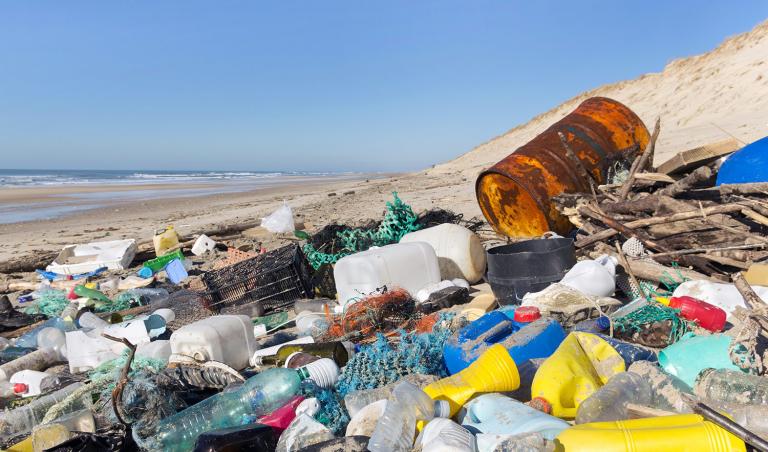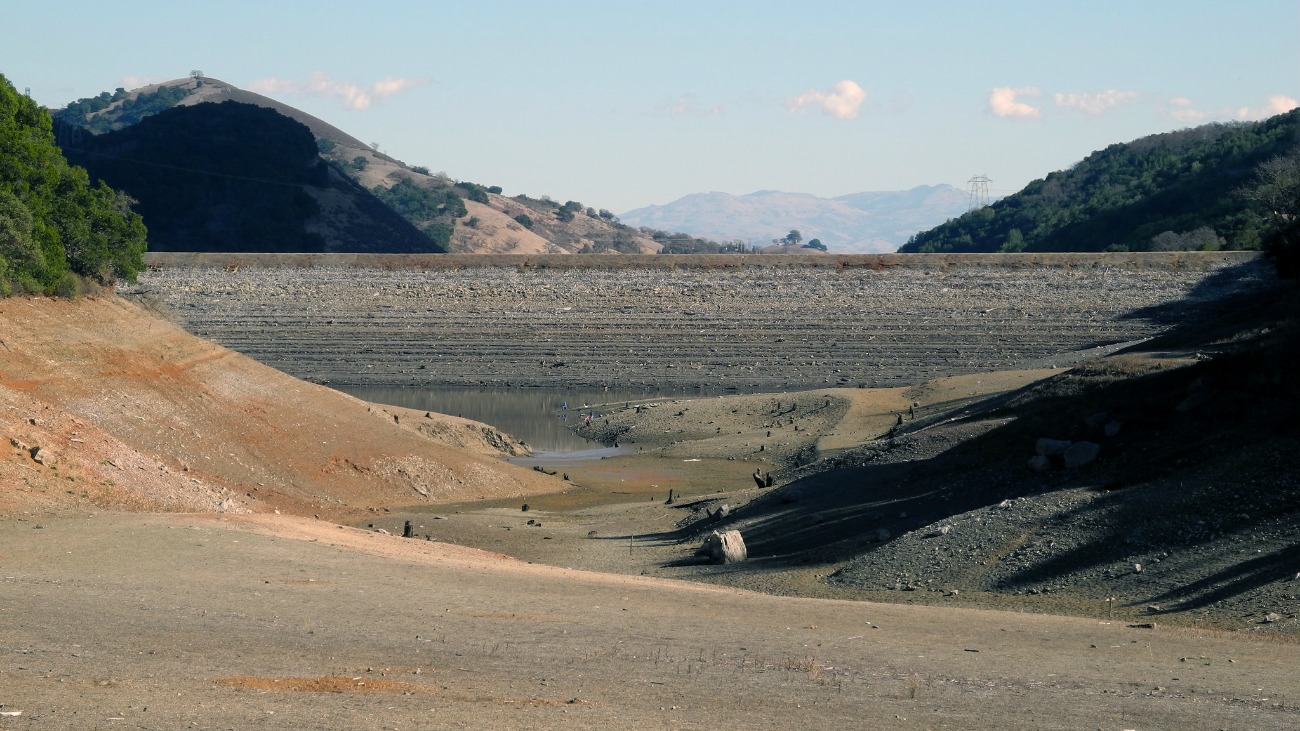This story was originally published by Slate and is reproduced here as part of the Climate Desk collaboration.
When it comes to drought in the West, we ain’t seen nothin’ yet. That’s the conclusion from a new study that links an increasing risk of decades-long drought episodes in the western United States to human-induced climate change. The study predicts drought severity outside the bounds of what’s thought to have occurred over the past 1,000 years, based on local tree-ring records.
“It’s certainly not good news,” said co-author Jason Smerdon, a climate scientist at Columbia University’s Lamont-Doherty Earth Observatory. The study was published Thursday in the inaugural issue of Science Advances, an open-access journal from AAAS, the same publisher as Science.
Smerdon’s study is the first to examine the future risk of “megadrought” in the southwest and central United States in the context of historical episodes of drought in the same regions. Smerdon’s study suggests that the coming years are likely to see droughts worse than the epic dry periods that are thought to have caused profound changes to human settlement in the region over the last millennium.
“They’re ‘mega’ because they are droughts that lasted in these regions for multiple decades,” said Smerdon in an interview with Slate. “We haven’t seen anything like this since at least the 1400s.” In comparison, the current California drought is four years old, though drought has been present in most of the last 15 years somewhere in the West.
Drought, especially the kind that affects agriculture, can be thought of as a balance between water supply (precipitation) and water demand (uptake by plants and people), the latter of which is strongly driven by evaporation rates linked to temperature.
Smerdon’s research suggests that rising temperatures connected to climate change — not necessarily a decrease in precipitation — will boost the risks of drought far beyond that caused by historic natural variability. In the last half of the 21st century, Smerdon says to expect a surge of dryness he and his co-authors call “unprecedented.” In the worst-case scenario climate pathway — the one the world is currently on — the new research suggests a greater than 80 percent risk of megadrought after 2050.
“The story is pretty straightforward: The cause is increasing levels of CO2 in the atmosphere,” said Smerdon.
To come to this conclusion, Smerdon and his colleagues used a range of soil moisture indicators and 17 different climate models to calibrate future global warming-influenced droughts based on the past. “The surprising thing to us was really how consistent the response was over these regions, nearly regardless of what model we used or what soil moisture metric we looked at,” said lead author Benjamin Cook in a press release. Cook’s father, Edward, helped create the North American Drought Atlas, a collection of tree rings that forms the basis for the historical analysis in the new study.
“The future looks as bad or worse as even the most severely dry intervals — the paleoclimate intervals — encompassing these megadrought periods that we’ve seen,” said Smerdon. Smerdon notes that although some of the models they examined show a slight increase in precipitation by the end of the century, that signal is “overwhelmed” by the increase in evaporation due to warmer temperatures.
The new study is generally in line with a broad consensus of research from the last 10 years, though it comes with added certainty given the robust methods the authors used. “I’d like to say that this is a surprise, but the evidence has been growing for years now,” said Peter Gleick, a hydroclimatologist at the Pacific Institute in Oakland, Calif., who was not involved in the research.
“This study highlights the fact that not only can you not ignore temperature, but temperature is a huge driver of drought,” Gleick told Slate. “That effect is enough to push us into a regime that’s worse than the worst droughts in recorded history. It’s scary.”
The work is the clearest evidence yet that worsening drought in the West and Midwest will inflict fundamental changes on the American landscape, with implications for tens of millions of people from San Francisco to Las Vegas and from Dallas to Des Moines. Though the ongoing California drought continues to dominate headlines — 2014 was the state’s warmest year on record by a wide margin — Smerdon and his colleagues show that we should be equally concerned about fundamental risks to agricultural sustainability in the heartland, too.
“We cannot hope that losses in the Southwest will be made up in the Midwest, according to this study,” said Gleick. “There are degrees of screwed, and this paper suggests we’re falling off the cliff.”
Gleick emphasizes that the new research is particularly troubling because demographic trends point toward increased population in these same areas over the same timescale.
The current drought in California appears to fit the model of the types of “hot droughts” that the new paper predicts for the rest of the century. However, Smerdon rightfully acknowledges that the scientific jury’s still out on direct linkages between the current drought in the West and climate change.
So far this winter, California’s snowpack is at near-record lows despite statewide precipitation that’s close to average. In 2015, there have been record-setting rains, record-setting dry spells, and record-warm temperatures in northern California. Most of the storms so far this winter have been simply too warm to produce much snow in the mountains, a trend that’s expected to continue to worsen in the future.
“All the things we were hoping wouldn’t happen 5-10 years ago are happening and I don’t think we have sounded the alarm fast enough,” said Stephanie Castle, a researcher at the University of California–Irvine whose recent work focuses on western groundwater depletion, in an email to Slate.
Though Smerdon is quick to note he’s not qualified to advise governments on public policy, he said the answer to America’s growing megadrought problem is simple: “Quit dumping CO2 into the atmosphere.”
This article is part of Future Tense, a collaboration among Arizona State University, New America, and Slate.



